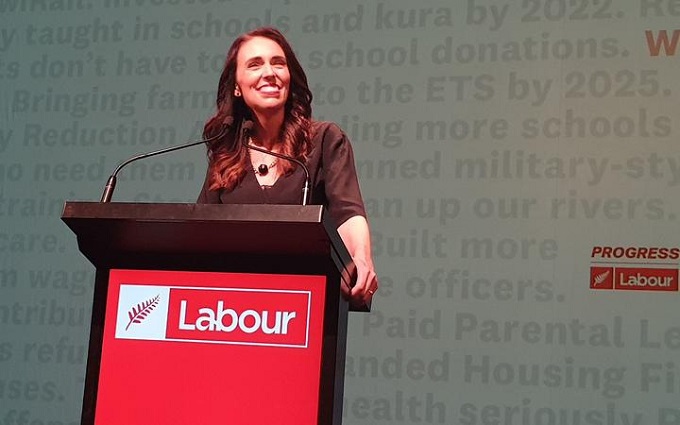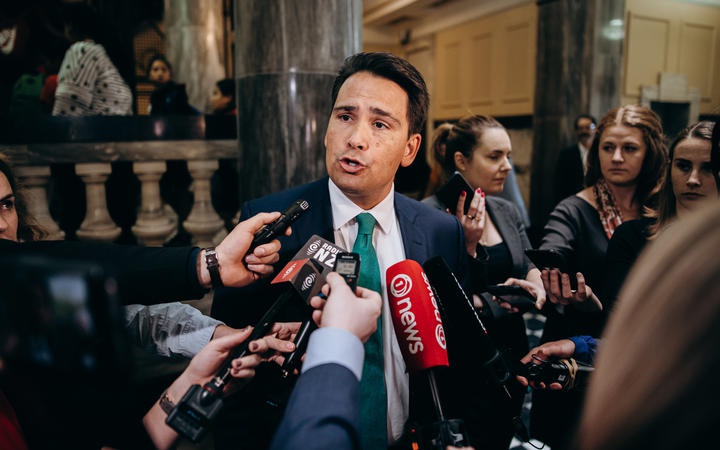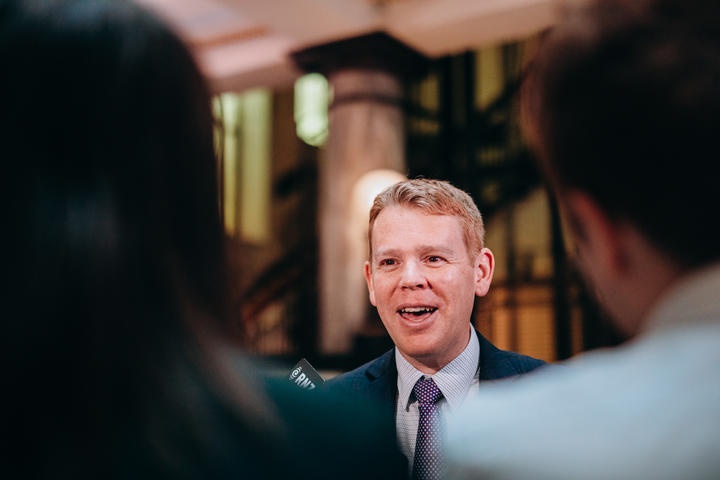
This article and images are shared with permission from RNZ via Scoop Media.
Principals across the country are pleased with a surprise cash injection from the government, but say the allocation of funding has been somewhat mysterious.
Prime Minister Jacinda Ardern announced at Labour’s annual conference in Whanganui over the weekend a $400,000 funding boost to modernise classrooms, fix roofs and gutters and improve heating and lighting.
Nearly every state school is slated to receive between $50,000 and $400,000 depending on enrolment, decile and location. The one-off cash injection is the first project to be announced in the government’s infrastructure package signalled by Finance Minister Grant Robertson at the conference on Saturday.
However, integrated schools and schools in leased accommodation are not eligible.
Principal of state integrated school John Paul College in Rotorua, Patrick Walsh, said schools like his are also struggling with leaky buildings, over-crowding and outdated facilities.
“We’ve been struggling in the school sector with water tightness issues in schools, overcrowding, the requirements of new schools in growing populations such as Auckland and Tauranga and many of the buildings do require updating to become more modern learning environments,” he said.
“It’s a great surprise and I’m sure all the schools around New Zealand will be delighted at the announcement” – Patrick Walsh duration 1:47
from Morning Report
He said all students deserved high-quality classrooms, and he was hopeful integrated schools like his would be able to get similar funding.
“There are arrangements between state integrated schools and the Crown, so we’re hopeful that the integrated school sector will be able to negotiate funding agreements with the Crown so that those who choose to go to a state-integrated school know that they’re going to be in facilities that are equal to those in state schools.”
“At the end of the day, all students attending schools in New Zealand deserve to be in high-quality classrooms.”
Principal of Te Mata School in Havelock North, Michael Bain, said every school needed funding like this.
“Basically we’re funded on a basis where we’ve got to rock through four different priorities so you start with health and safety and then infrastructure, then you can move to modern learning environments in classrooms.

“Then there’s this great mass of priority four – all the other stuff. You know, the car parks, the halls, the admin upgrades, playgrounds, outdoor … areas for kids. Those are the bits we can’t ever seem to get to. By the time you’ve addressed plumbing and sewerage and roofing and guttering there’s not a lot left over.
“It’s about how do we actually cut it back now, so that it’s something that’s actually achievable” – Michael Bain and Richard Dikes duration 4:19
from Morning Report
“It’s all about putting good stuff in front of kids. If we want 21st-century education we can’t do it on an 18th-century budget really.”
He admitted that was probably something of an exaggeration but said the devil would be in the details.
“How do we actually get access to the funds? What are the ‘ministry usual planning processes’ that are alluded to in the report? Will the construction industry be able to cater for a $400m injection through design, project management and building? We’ve all got great ideas on how to do it … it’s about how do actually we cut it back now, so that it’s something that’s actually achievable.”
Richard Dykes, principal of Auckland’s Glendowie College, echoed that sentiment.
“I suppose I’m like Michael, we welcome any money. There’s a big backlog … to reiterate what Michael’s saying about the bureaucracy, I really just hope we get through that. Three months later we’re still waiting for guidelines on that $95 million for learning support.”
He said the allocation of funding was also somewhat mysterious.
“The rollout’s just a little perplexing. You take a school like Avondale with 2700 … they’ll be lucky to paint two or three blocks compared to a school of 580 which gets the same amount.
“Hopefully we can cut through that because it’s a welcome gift from the prime minister.”
Integrated schools ready to challenge government
The organisations that own integrated schools have warned they could go to court to get access to new government funding for school property.
Paul Ferris from the Association of Proprietors of Integrated Schools said he initially assumed the government had made a mistake in excluding integrated schools from the deal.
“I was hoping to go to the detail and find that was an oversight in the announcement because in every way in our legal agreements we would expect to be treated the same way.
“That’s the partnership arrangement we believe we have with the government. Because it’s maintenance money they’re giving, then we would share in maintenance money given out by the state.”
Mr Ferris said integrated schools will explore their options, including their legal rights.
Business as usual – Opposition
The National party said the government was just dressing up standard school maintenance grants as infrastructure investment.
National leader Simon Bridges also questioned whether Labour would be able to deliver on its school infrastructure plans, claiming it had failed to with KiwiBuild and light rail.
Photo: RNZ /Dom Thomas
“For all the hype around it at the Labour Party conference, it’s actually less money than Labour’s wasted on working groups and committees so far in this government, and supposedly though they’re going ot have to borrow for it and break their debt responsibility rules, which isn’t on.”
The spending is the first project announced under the government’s plan to invest in infrastructure by increasing borrowing.

However, Ms Ardern said the investment was the most the government had been spent on school maintenance in 25 years, and Education Minister Chris Hipkins said underinvestment over the past decade had seen schools putting off vital upgrades.
“It’s often the unglamorous stuff that’s the most run down. So school toilet blocks for example are something that often get overlooked and yet some of them are just at the point where for health and safety reasons and for hygiene reasons we need to do big upgrade work.”










